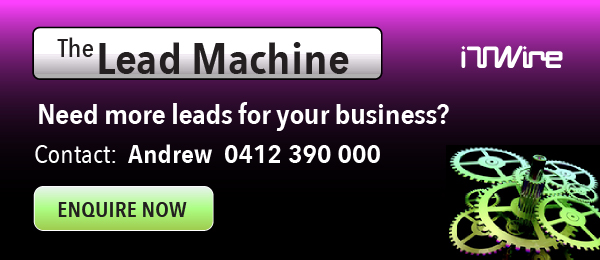

Bridging the gap between ambition and action in sustainability
source link: https://itwire.com/ict-energy-and-sustainability/bridging-the-gap-between-ambition-and-action-in-sustainability.html
Go to the source link to view the article. You can view the picture content, updated content and better typesetting reading experience. If the link is broken, please click the button below to view the snapshot at that time.
Friday, 19 April 2024 17:01
Bridging the gap between ambition and action in sustainability
By Peter White
GUEST OPINION by Peter White – Managing Director, APAC, Orbus Software: In an era marked by increasing environmental concerns and corporate social responsibility, enterprises are under mounting pressure to integrate sustainability into their operations.
Sustainability and decarbonisation have now taken centre stage on the C-suite agenda, however, being a trending topic doesn't necessarily equate to meaningful progress. It is imperative to bridge the gap between ambition and action.
Many Australian organisations have ambitious sustainability targets, and the nation has its Net Zero 2050 target set by the Australian Government. Yet to progress, the task lies in transforming sustainability from a strategic agenda item into a series of actionable, everyday, step-by-step decisions.
Silos within organisations hinder this. Enterprises, especially, must bring departments together for more cohesive and transparent conversations, and to provide visibility into the journey.
Sustainability is no longer an optional consideration during a transformation process. It must be integrated into decision-making criteria, alongside factors such as time, cost, impact, alignment to strategy, and new technology. Sustainability's inclusion ensures that organisations make informed and responsible choices.
So, what role does enterprise architecture play in assisting organisations that are addressing sustainability? Let’s break it down.
One of the biggest challenges enterprise architecture addresses is that often the data used to enable sustainability and decarbonisation progress can be scattered across an organisation and be difficult to find; we certainly need to know it and measure it. Effective data collection and monitoring enables enterprises to capture vast amounts of information related to their operations in areas such as energy consumption, waste generation, supply chain activities, and more. Sensors, IoT devices, and integrated systems can gather real-time data that provides insights into resource utilisation and environmental performance.
Then we need to understand and learn from the data. Advanced analytics tools can process the collected data and generate both actionable insights and performance metrics. Enterprises can create custom dashboards and reports to track key sustainability indicators, such as carbon emissions, water usage, recycling rates, and renewable energy consumption. These analytics drive informed decision-making and strategy development.
Sustainability in supply chains is a major focus area for enterprises. Having transparency here enables companies to track the origins of raw materials, assess supplier sustainability performance, and identify areas of risk or inefficiency. Blockchain technology can also be utilised to create immutable records of sustainability practices across supply chains.
Collaboration platforms and communication tools integrated into enterprise software solutions facilitate engagement with internal teams, external stakeholders, suppliers, customers, and regulatory bodies. Transparent communication fosters partnerships for sustainability initiatives, promotes best practices sharing, and enhances accountability across the value chain.
Simulation and modelling capabilities (e.g. digital twins) allow enterprises to mimic different scenarios and assess the potential impact of sustainability initiatives. For example, organisations can simulate the adoption of renewable energy sources, evaluate supply chain optimisations, or analyse the lifecycle environmental impact of products. This is gold when implementing change.
Enterprise architecture frameworks, such as TOGAF (The Open Group Architecture Framework) or Zachman Framework, enable organisations to align sustainability goals with overall business strategy. By integrating sustainability objectives into the architecture, enterprises ensure that sustainability is not treated as a separate initiative but as an integral part of the business model.
A well-designed enterprise architecture promotes modularity and flexibility, allowing organisations to adapt quickly to changing sustainability requirements and market dynamics. Modular architectures facilitate the integration of new sustainable technologies, processes, and practices without disrupting existing operations.
Also to be effective, ESG must be embedded culturally within an organisation. Conversations with executives and transformation teams can be the catalyst for change, and incentivising ESG efforts should focus on rewards, recognition, and cultural change rather than punitive measures. For real change, organisations need to truly embed sustainability into the culture of business, rather than treating it as an add-on for compliance purposes.
Enterprise architecture promotes a culture of continuous improvement by providing mechanisms for monitoring, evaluating, and optimising sustainability initiatives. Through feedback loops, performance metrics, and analytics-driven insights, organisations can refine their sustainability strategies, address inefficiencies, and drive ongoing innovation in sustainable practices.
Enterprise architecture can guide organisations towards greener and more sustainable practices, empowering them to change for the better and lead in creating a better world and future.
Read 617 times
Please join our community here and become a VIP.
Subscribe to ITWIRE UPDATE Newsletter here
JOIN our iTWireTV our YouTube Community here
BACK TO LATEST NEWS here
IDC WHITE PAPER: The Business Value of Aiven Data Cloud Solutions
According to IDC, Aiven enables your teams to perform more efficiently, reduce direct infrastructure costs, and provide improved database performance, agility and scalability.Find out how Aiven makes teams 48% more efficient, allowing staff to focus on high-value activities that drive real business results:
340% 3-year ROI – break even in 5 months (average)
37% lower 3-year cost of operations
78% reduction in staff time for database deployments
Download the IDC White Paper now
PROMOTE YOUR WEBINAR ON ITWIRE
It's all about Webinars.Marketing budgets are now focused on Webinars combined with Lead Generation.
If you wish to promote a Webinar we recommend at least a 3 to 4 week campaign prior to your event.
The iTWire campaign will include extensive adverts on our News Site itwire.com and prominent Newsletter promotion https://itwire.com/itwire-update.html and Promotional News & Editorial. Plus a video interview of the key speaker on iTWire TV https://www.youtube.com/c/iTWireTV/videos which will be used in Promotional Posts on the iTWire Home Page.
Now we are coming out of Lockdown iTWire will be focussed to assisting with your webinars and campaigns and assistance via part payments and extended terms, a Webinar Business Booster Pack and other supportive programs. We can also create your adverts and written content plus coordinate your video interview.
We look forward to discussing your campaign goals with you. Please click the button below.
Recommend
About Joyk
Aggregate valuable and interesting links.
Joyk means Joy of geeK

